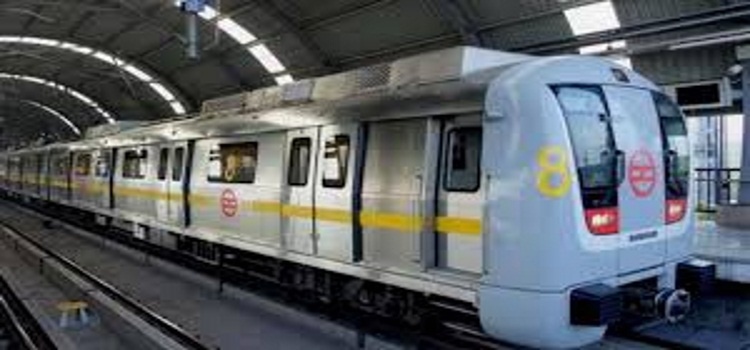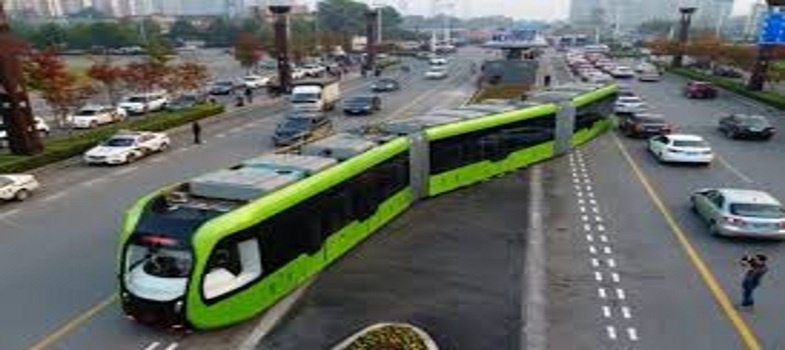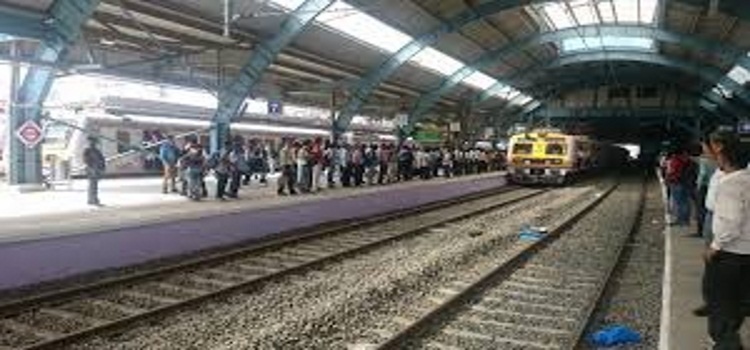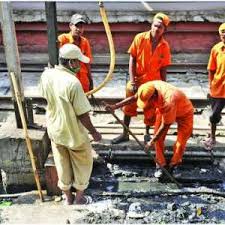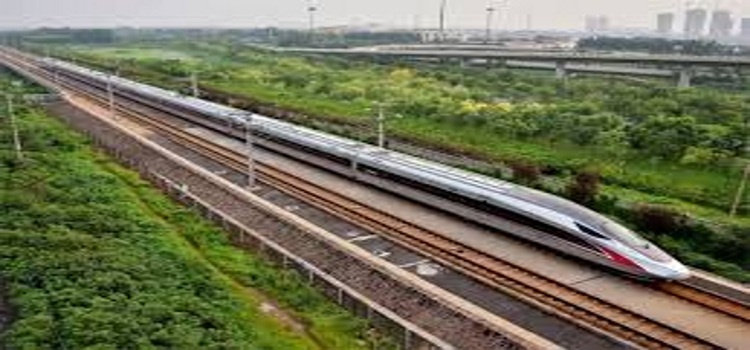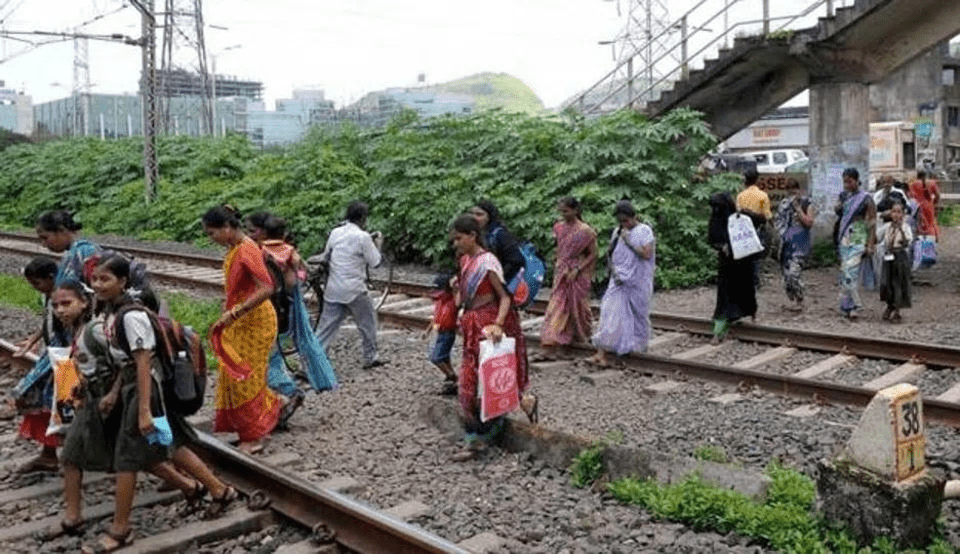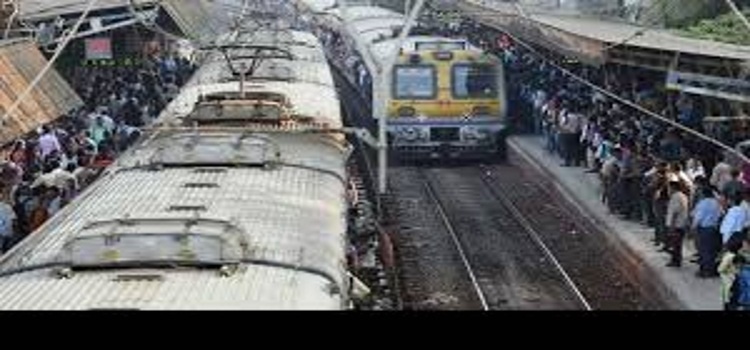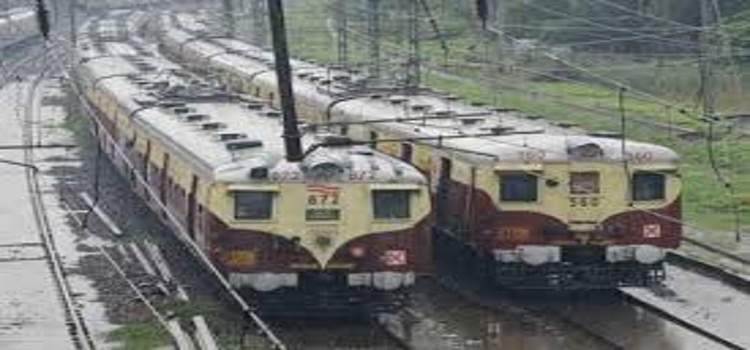
SECUNDERABAD: In order to clear extra rush of passengers, the following Special Trains will run between Tirupati – Dharmavaram – Tirupati as detailed below:-
Train No. 07402/07401 Tirupati–Dharmavaram–Tirupati Special Trains:
Train No. 07402 Tirupati – Dharmavaram Special train will depart Tirupati at 05:00 hrs from 8th November to 14th November 2017 and arrive Dharmavaram at 10:40 hrs on the same day.
In the return direction, Train No. 07401 Dharmavaram – Tirupati Special train will depart Dharmavaram at 13:00 hrs from 8th November to 14th November 2017 and arrive Tirupati at 19:10 hrs on the same day.
Enroute, these special trains will stop at Pakala, Piler, Madanapalle Road and Kadiri stations in both the directions.
These trains will comprise of one AC II Tier, two AC III Tier, ten Sleeper Class and four General Second class Coaches.
Special Trains between Kakinada Port- Satya Sai Prasanthi Nilayam
In order to clear extra rush of Passengers during spiritual festivities of Bhagawan Sri Satya Sai Baba from 12th to 26th November, 2017 at Puttaparthi, SCR will run four special trains between Kakinada Port – Satya Sai Prasanthi Nilayam – Kakinada Port as detailed below:-
Tr.no. 07248/07245 Kakinada Port – Satya Sai Prasanthi Nilayam – Vijayawada Special Trains (2 Services):
Train No. 07248 Kakinada Port – Satya Sai Prasanthi Nilayam special train will depart Kakinada Port at 14:30 hrs on 18th November, 2017 and arrive Satya Sai Prasanthi Nilayam at 06:25 hrs on the next day.
Enroute, this special train will also stop at Kakinada Town, Samalkot, Rajahmundry, Nidadavolu, Eluru, Vijayawada, Guntur, Narsaraopet, Donakonda, Markapuram Road, Giddalur, Nandyal, Betamcharla, Dhone, Gooty, Anantapur and Dharmavaram stations.
In opposite direction, Train No. 07245 Satya Sai Prasanthi Nilayam – Vijayawada special train will depart Satya Sai Prasanthi Nilayam at 17:45 hrs on 19th November, 2017 and arrive Vijayawada at 05:15 hrs on the next day.
Enroute, this special train will also stop at Dharmavaram, Anantapur, Gooty, Dhone, Betamcharla, Nandyal, Giddalur, Markapuram Road, Donakonda, Narsaraopet and Guntur stations.
Tr.no. 07246/07249 Vijayawada – Satya Sai Prasanthi Nilayam – Kakinada Port Special Trains (2 Services):
Train No. 07246 Vijayawada – Satya Sai Prasanthi Nilayam special train will depart Vijayawada at 23:10 hrs on 23rd November, 2017 and arrive Satya Sai Prasanthi Nilayam at 11:30 hrs on the next day.
Enroute, this special train will also stop at Guntur, Narsaraopet, Donakonda, Markapuram Road, Giddalur, Nandyal, Betamcharla, Dhone, Gooty, Anantapur and Dharmavaram stations.
In opposite direction, Train No. 07249 Satya Sai Prasanthi Nilayam – Kakinada Port special train will depart Satya Sai Prasanthi Nilayam at 16:20 hrs on 24th November, 2017 and arrive Kakinada Port at 09:30 hrs on the next day.
Enroute, this special train will also stop at Dharmavaram, Anantapur, Gooty, Dhone, Betamcharla, Nandyal, Giddalur, Markapuram Road, Donakonda, Narsaraopet, Guntur, Vijayawada, Eluru, Nidadavolu, Rajahmundry, Samalkot and Kakinada Town stations
*These special trains will have AC II Tier, AC III Tier, Sleeper Class and General Second class coaches.
Train No. 04428/04427 New Delhi – Kochuveli – New Delhi Superfast Special Trains via Warangal, Vijayawada (2 Services):
Train No. 04428 New Delhi – Kochuveli superfast Special Train will depart New Delhi 11:50 hrs on 8th November, 2017 (Wednesday) arrive/depart Warangal at 12:20/12:25 hrs, Vijayawada at 15:5/15:50 hrs on the next day and arrive Kochuveli at 15:45 hrs on Friday.
In the return direction, Train No. 04427 Kochuveli – New Delhi superfast Special Train will depart Kochuveli at 23:00 hrs 12th November, 2017 (Sunday) arrive/depart Vijayawada at 21:00/21:15 hrs, Warangal at 23:40/23:45 hrs on the next day and arrive New Delhi at 04:00 hrs on Wednesday.
Enroute, these superfast special trains will stop at Gwalior, Jhansi, Bhopal, Itarsi, Nagpur, Balharshah, Warangal, Vijayawada, Renigunta, Jolarpettai, Salem, Erode, Coimbatore, Thrisur and Ernakulam Town stations in both the directions.
These trains will have AC III tier, Sleeper Class, Second General and Brake Luggage cum Generator Car Coaches.
Train No. 07230/07229 Hyderabad – Kochuveli – Hyderabad Special Trains (2 Services):
Train No. 07230 Hyderabad – Kochuveli Special Train will depart Hyderabad at 21.00 hrs on 09th November, 2017 (Thursday) and arrive Kochuveli at 03.20 hrs on Saturday.
In the return direction, Train No. 07229 Kochuveli – Hyderabad Special Train will depart Kochuveli at 20:00 hrs on 11th November, 2017 (Saturday) and arrive Hyderabad at 03:40 hrs on Monday.
Enroute, these special trains will stop at Secunderabad, Kazipet, Warangal, Mahabubabad, Khammam, Vijayawada, Tenali, Ongole, Nellore, Gudur, Renigunta, Tirupati, Chittoor, Katpadi, Ambur, Vaniyambadi, Jolarpettai, Salem, Erode, Tiruppur, Coimbatore, Palakkad, Ottapalem, Thrisur, Aluva, Ernakulam Town, Kottayam, Tiruvalla, Chengannur, Kayankulam and Kollam stations in both the directions.
These trains will have AC II tier, AC III tier , Sleeper Class and Luggage cum Brakevan Coaches.
Additional Stoppage to Guwahati – Kochuveli – Guwahati Special Trains at Kishanganj Railway Station
With the view to facilitate the passengers, additional stoppage for five minutes is provided for Train No. 05616/05615 Guwahati – Kochuveli – Guwahati Special Trains at Kishanganj Railway Station as detailed below:-
Train No. 05616 Guwahati – Kochuveli Special Trainwill arrive / depart Kishanganj station at 17:00/17:05 hrs.
Train No. 05615 Kochuveli – Guwahati special Train will arrive / depart Kishanganj station at 22:03/22:08 hrs.
Meanwhile, Railway had issued a press release on the diversion / cancellation of certain trains.
Trains Diverted With Additional Stoppage Provided at Hijli
In order to facilitate infrastructure development works at Kharagpur Station in South Eastern Railway a line block is imposed, consequently the following trains are diverted to run without touching Kharagpur Station and with provision of additional stoppage at Hijli Railway Station on the following dates.
1) Train No.22603 Kharagpur – Villupuram Bi- weekly Express Train scheduled to depart Kharagpur on 17th November, 2017 will arrive/depart Hijili 14.12/14.17 hrs.
2) Train No.12514 Guwahati – Secunderabad Express Train scheduled to depart Guwahati on 16th November, 2017 will arrive/depart Hijili at 03.00/03.05 hrs.
3) Train No.22604 Villupuram – Kharagpur Bi- weekly Express Train scheduled to depart Villupuram on 16th November, 2017 will arrive/depart Hijili at 19.05/19.10 hrs.
4) Train No.12508 Guwahati – Thiruvantapuram Express Train scheduled to depart Guwahati on 17th November, 2017 will arrive/depart Hijili at 03.00/03.05 hrs.
5) Train No.22502 New Tinsukia – KSR Bengaluru Express Train scheduled to depart New Tinsukia on 17th November, 2017 will arrive/depart Hijili at 03.00/03.05 hrs.
6) Train No.12509 Bengaluru Cantt – Guwahati Express Train scheduled to depart Bengaluru Cantt on 15th November, 2017 will arrive/depart Hijili at 07.45/07.50 hrs.
7) Train No.12253 Yesvantapur – Bhagalpur Express Train scheduled to depart Yeshvantapur on 18th November, 2017 will arrive/depart Hijili at 19.50/19.55 hrs.
Train No.15227 Yesvantpur – Muzaffurpur Express Train scheduled to depart Yesvantpur on 15th November, 2017 will arrive/depart Hijili at 10.50/10.55 hrs.
Trains Diverted due to recent floods in Samastipur Division of East Coast Rly
1) Train No. 07091 Secunderabad – Raxaul Special train which has left Secunderabad on 7th November, 2017 is diverted via Samastipur, Muzaffarpur, Sagauli and Raxaul instead of Samastipur, Darbhanga , Sitamarhi and Raxaul stations.
2) Train No. 07092 Raxaul – Secunderabad Special Train scheduled to depart Raxaul at 12.45hrs on 10th November, 2017 is diverted via Raxaul, Sagauli, Muzaffarpur and Samastipur instead of Raxaul, Sitamarhi, Darbhanga and Samastipur Stations.
Trains Cancelled due to Sudden Foggy Weather in Northern Railway
1) Train No. 04426 Nizamuddin – Kochuveli Special Train is cancelled on 11th , 18th and 25th November,2017.
2) Train No. 04425 Kochuveli – Nizamuddin Special Train is cancelled on 13th , 20th and 27th November,2017.
EXTENSION OF TEMPORARY DIVERSION OF TRAIN
Train No. 22691/22692, KSR Bengaluru – Hazrat Nizamuddin – KSR Bengaluru Rajdhani Express will continue to run via diverted route, Gooty – Kalluru till 31st March, 2018 for operational reasons.
CANCELLATION OF TRAINS
1. Train No. 12245, Howarah – Yesvantpur Duranto Express journey commencing on 19th November, 2017 is cancelled.
2. Train No. 12246, Yesvantpur – Howarah Duranto Express journey commencing on 21st November, 2017 will remain cancelled for want of rake.
TEMPORARY DIVERSION OF TRAINS
Train No. 12509, Bengaluru Cantt. – Guwahati journey commencing on 15th, 16th & 17th November, 2017; Train No. 15227, Yesvantpur – Mujaffarpur journey commencing on 15th November, 2017; Train No. 12503, Bengaluru Cantt. – Kamakhya journey commencing on 17th November, 2017; Train No. 12253, Yesvantpur – Bhagalpur journey commencing on 18th November, 2017 will be diverted via Hijilli, Nigatpur, Asansol instead of Kharagpur, Howrah.
Train No. 22502, New Tinsukiya – KSR Bengaluru journey commencing on 17th November, 2017 will be diverted via Asansol, Nigatpur, Hijilli instead of Howrah, Kharagpur.
